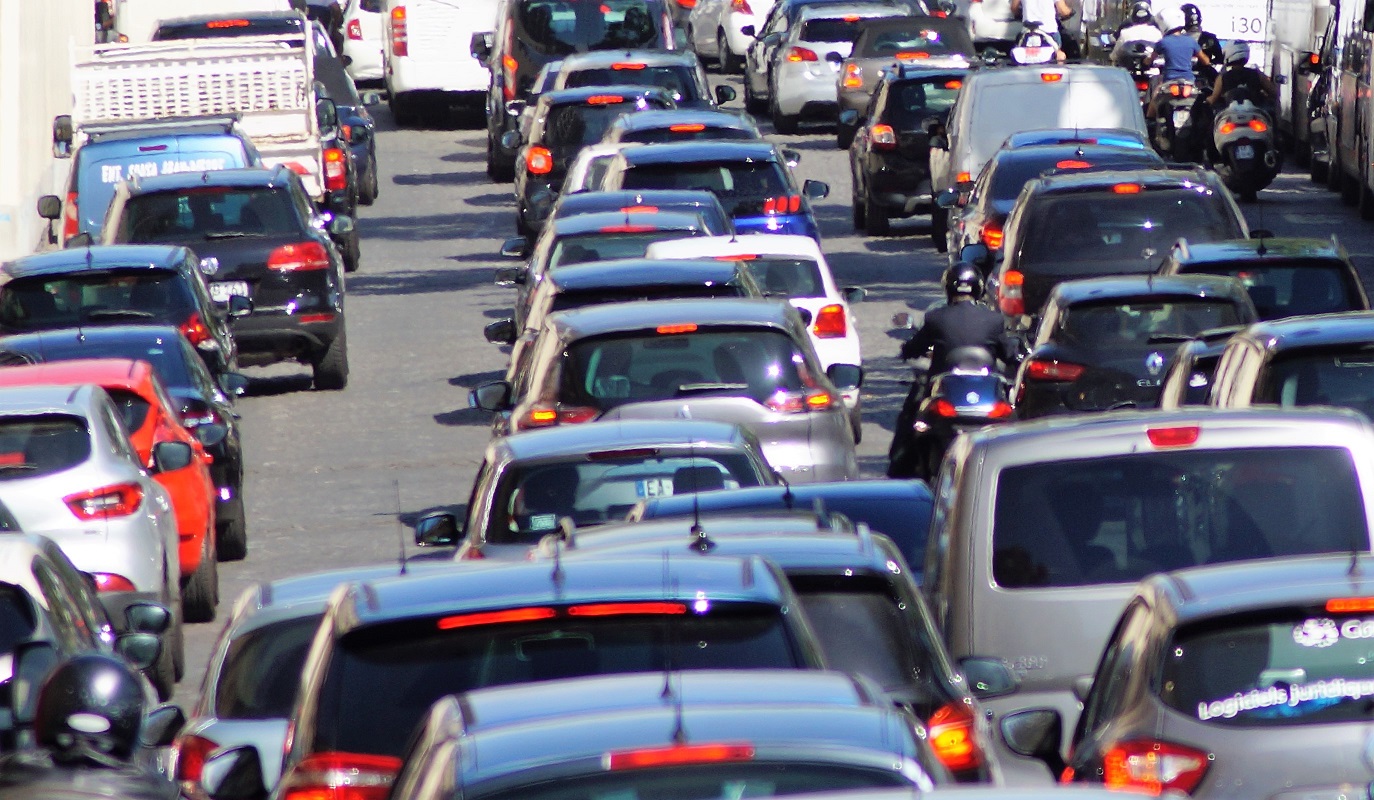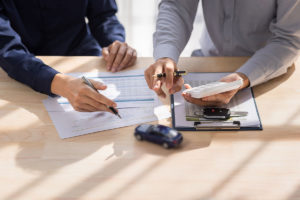How to Survive in Heavy Traffic

Nearly everyone who spends any significant time out on the road will agree that bumper-to-bumper traffic is the bane of their existence. Be it from accidents, construction, or congestion, heavy traffic can fry one’s nerves and turn a simple commute into an arduous journey. In this article, we’ll relay some expert suggestions to help make your journey a little less challenging.
In This Article
Remove Distractions
Don’t Lane-Weave
Maintain a Safe Following Distance
Stop Rubbernecking
Stay Calm
Remove Distractions
Many people use the slowdown caused by traffic jams to send a quick text or compose an email. That’s not a good idea. “Obviously you should never text and drive, and stay focused on the road at all times. This is even more important when driving in heavy traffic. The average text message takes your eyes off the road for five seconds. With a lot of other cars on the road, this small amount of time is enough to cause a major accident. Avoid sending texts, checking emails and even changing radio stations when in traffic. If you do have to send a text, get off the road first.” (TopDriver.com)
Don’t Lane-Weave
Why does it always seem like whichever lane we choose ends up being the “slow lane?” “If we could only switch over to another lane, we’d be going much faster.” A lot of drivers who are stuck in traffic think that way. Unfortunately, weaving between lanes isn’t going to save the significant amount of time that many think it will. “Multiple experiments show that highway weavers may save a minute or two in an hour-plus drive. In exchange for that, every lane change can triple the likelihood of an accident. Lane changes make sense to avoid a line of slow trucks, a single drastically pokey lane pirate, an accident or other obstruction. Otherwise, leave space on the right for entering and exiting traffic and travel in the other lanes.” (Detroit Free Press)
Maintain a Safe Following Distance
It’s typical when driving in heavy traffic to find yourself riding extremely close to the back bumper of the vehicle in front of you. While many people think that since the vehicles are traveling at such a slow speed, following distance isn’t as important, that couldn’t be further from the truth. The stop-and-go nature of traffic is the ideal environment for rear-end collisions. Many experts recommend employing the 3-second rule. “Determining the three-second gap is relatively easy. When following a vehicle, pick an overhead road sign, a tree or other roadside marker. Note when the vehicle ahead passes that marker, then see how many seconds it takes (count 1-1,000; 2-1,000; 3-1,000) for you to pass the same spot. If it is not at least three seconds, leave more space and increase your following distance.” (Travelers)
Stop Rubbernecking
This one can be tough, as curiosity is part of our human nature, but it’s really something that you want to avoid. “It’s commonplace for heavy traffic situations to be coupled with a crash or emergency. If this is the case, don’t let that change your focus. Keep your eyes on the drivers around you and road in front of you. Don’t turn your head to stare at a crash that isn’t involving you.” (TopDriver.com)
Stay Calm
Traffic jams have the tendency to bring out the worst in people. For that reason, it’s important to be cognizant of your emotions and make a concerted effort to stay calm. “Repeat to yourself: ‘Traffic happens. There’s nothing I can do about it.’ Letting it get the better of you will only elevate your sense of frustration and potentially create unnecessary trouble—especially if you succumb to hostile impulses aimed at drivers around you. “Remember that you’re not the only one who is late for something.” (Nationwide)
Ready to wave goodbye to fleet management headaches?
Let Motorlease take the wheel! Our fleet experts will handle all your vehicle needs. Experience the joyride of turnkey fleet management!Categories


